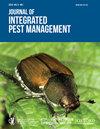亚洲Lymantria物种计划的历史:一种独特的路径风险缓解策略
IF 2.7
3区 农林科学
Q1 ENTOMOLOGY
引用次数: 2
摘要
20世纪80年代末和90年代初,俄罗斯远东港口和北美之间的粮食贸易发生了变化,导致了亚洲舞毒蛾(Vnukovskij)的引入,也为其运输开辟了一条新的途径。与商品和含有有害生物的包装材料通常使用和监管的途径不同,这为AGM提供了一种独特的途径。从俄罗斯远东出发,途经美国和加拿大西海岸港口的船只上感染了AGM及其相关物种的生命阶段。抵达北美后,卵在船只及其货物表面产卵,幼虫膨胀到港口周围的植被中孵化,从而可能形成AGM种群。制定了一个多层监测和检查计划,以减轻引入的风险,最初针对俄罗斯远东港口,最终包括其他亚洲国家的特定地区。在这篇文章中,我们总结并回顾了该缓解计划的组成部分,其中包括:风险评估、国内外港口的年度股东大会监测、政府植物保护组织(PPO)或其代理人的船舶清洁和认证、年度股东大会监督,以及根除美国和加拿大港口和其他地区引入的年度股东会。该计划的独特性在于其复杂性,涉及PPO的协调努力、各种检查组织的使用以及海洋运输行业的支持。本文章由计算机程序翻译,如有差异,请以英文原文为准。
History of the Asian Lymantria species Program: A Unique Pathway Risk Mitigation Strategy
Changes in grain trading between Russian Far Eastern ports and North America in the late 1980s and early 1990s led to introductions of Lymantria dispar asiatica (Vnukovskij), formerly called the Asian gypsy moth (AGM), and the recognition of a new pathway for its transport. Unlike the pathways commonly used and regulated for commodities and for packaging material containing pest organisms, this presented a unique pathway for AGM. Vessels departing from the Russia Far East transiting to ports on the west coast of the United States (US) and Canada (CA) were infested with life stages of AGM and related species. Upon arrival in North America, eggs oviposited on the surfaces of the ships and its cargo hatched with larvae ballooning to vegetation surrounding port areas leading to the potential establishment of AGM populations. A multi layered monitoring and inspection program was developed to mitigate this risk of introduction, initially for Russian Far Eastern ports, and eventually to include specified areas of other Asian countries. In this article, we summarize and review the integral parts of this mitigation program, which include: risk assessments, AGM monitoring in foreign and domestic ports, vessel cleaning and certification by a government Plant Protection Organization (PPO) or its proxy, AGM surveillance, and eradication of introduced AGM in ports and other areas within the United States and Canada. The uniqueness of this program is characterized by its complexity, which involves coordinated efforts of PPOs, the use of various inspection organizations, and the support of ocean transportation industries.
求助全文
通过发布文献求助,成功后即可免费获取论文全文。
去求助
来源期刊

Journal of Integrated Pest Management
Agricultural and Biological Sciences-Insect Science
CiteScore
5.80
自引率
3.60%
发文量
24
审稿时长
25 weeks
期刊介绍:
Journal of Integrated Pest Management is an open access, peer-reviewed, extension journal covering the field of integrated pest management. The Editors-in-Chief are Dr. Marlin E. Rice (formerly with Iowa State University) and Dr. Kevin L. Steffey (formerly with the University of Illinois). The journal is multi-disciplinary in scope, publishing articles in all pest management disciplines, including entomology, nematology, plant pathology, weed science, and other subject areas.
 求助内容:
求助内容: 应助结果提醒方式:
应助结果提醒方式:


